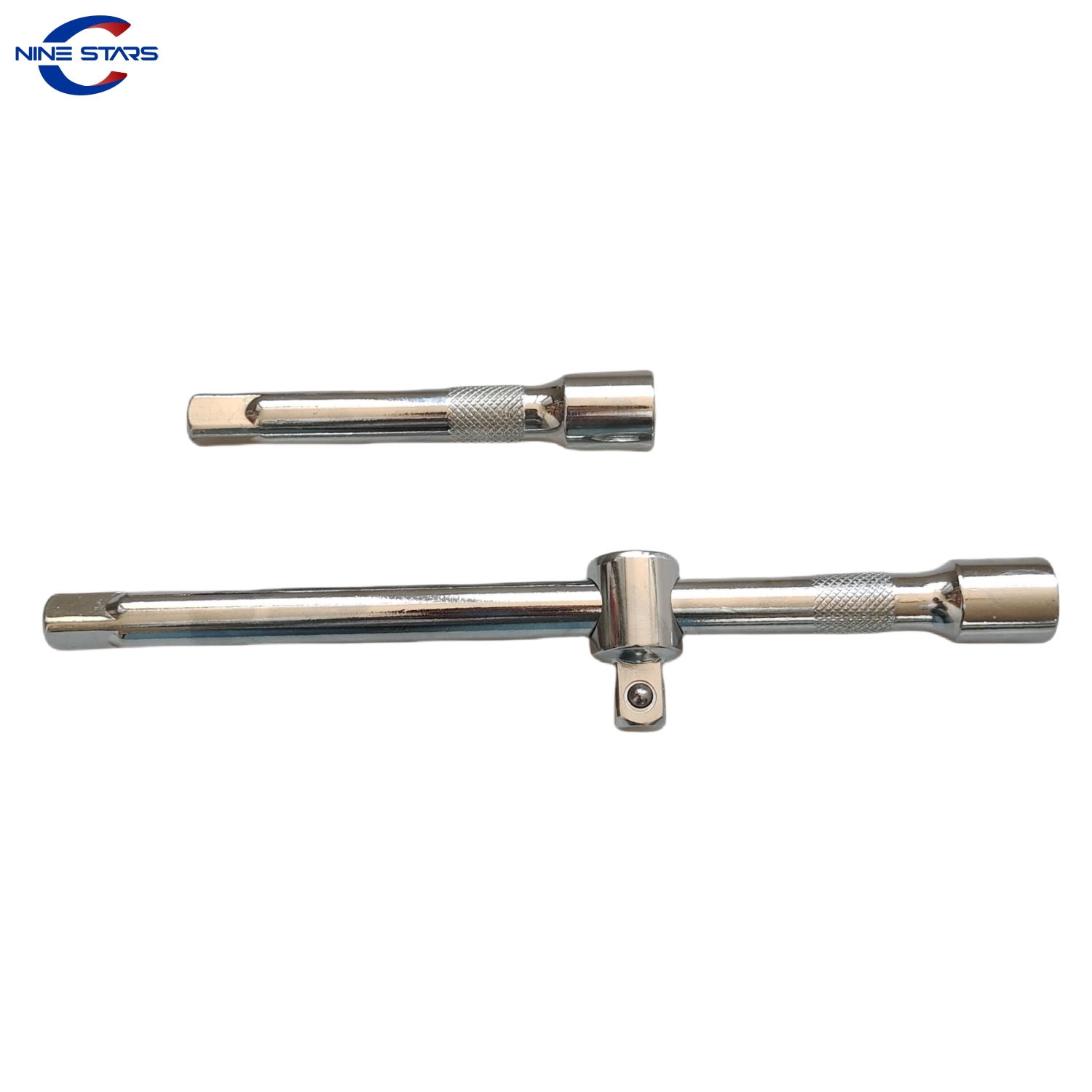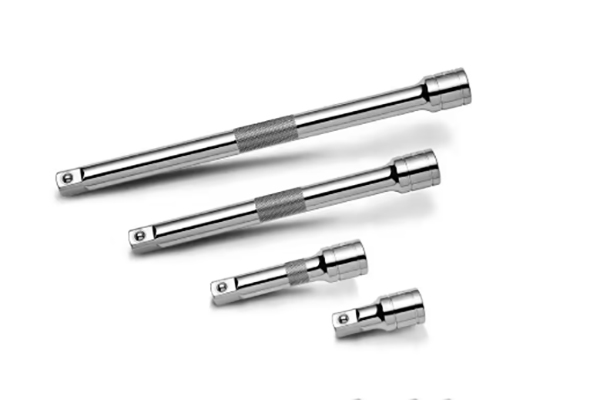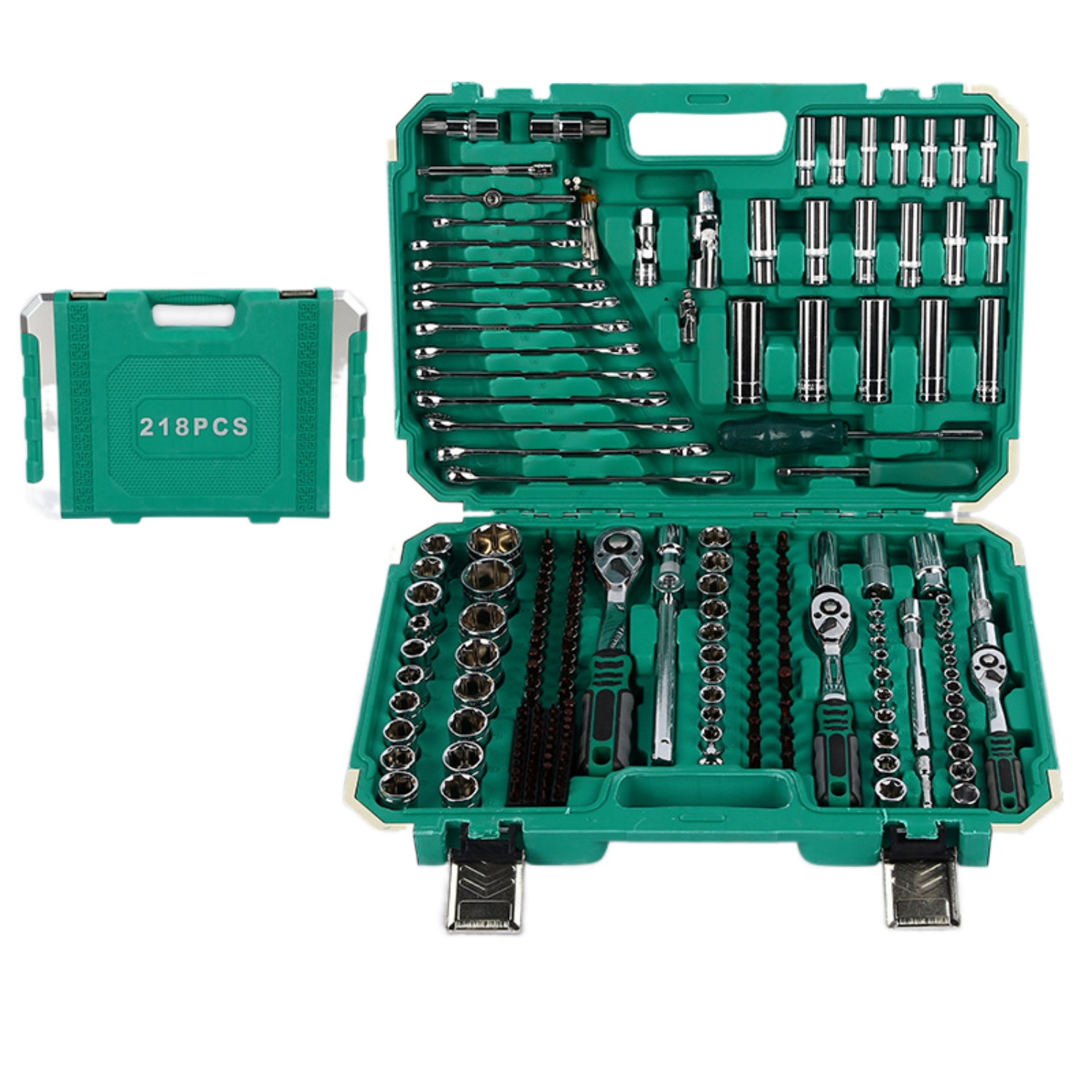Hello, my name is Allen, and I'm speaking to you from the heart of our operations at Linyi Tools in China. With seven production lines dedicated to creating high-quality tool storage and hand tools, I've spent years understanding the real-world challenges faced by professionals. I've had countless conversations with procurement officers like Mark Thompson from the USA, who need durable, reliable tools at a competitive price. This article is for you, Mark, and for every hardware retailer, construction manager, and auto shop owner who needs to understand a simple but crucial tool: the socket extension bar. This small piece of steel can be the difference between a five-minute fix and a five-hour headache. We'll explore what they are, how to use them, and what makes a good one, so you can make informed purchasing decisions for your business.
What is a Socket Extension Bar and Why is it Essential?
At its core, a socket extension bar is a beautifully simple tool. Think of it as an arm for your wrench. It’s a metal shaft with a male end (the drive) that connects to your ratchet or driver handle, and a female end that accepts a socket. Its primary job is to give you reach. Imagine an engine bay where a critical bolt is tucked away behind a manifold, or a fastener is recessed deep inside a piece of machinery. Without an extension, you simply can't get to it. This is where this humble bar becomes one of the most valuable tools in your kit.
For business owners and procurement officers, understanding this utility is key. Your customers—mechanics, builders, and technicians—face these access challenges daily. Providing them with a range of high-quality socket extension bars isn't just selling another tool; it's selling a solution. It's offering them a way to work more efficiently, avoid frustration, and complete jobs faster. A good extension saves time, and in any business, time is money. This simple bar enables a user to apply turning force, or torque, to a fastener that would otherwise be impossible to reach.
The design of a socket extension is straightforward but requires precision manufacturing. The drive ends must be perfectly sized to ensure a snug, secure fit with both the ratchet handle and the socket. Any wobble or play can lead to slipping, which not only damages the fastener head but can also cause injury. That's why at our factory, we focus on tight tolerances and strong materials like Chrome Vanadium (CR-V) steel. This ensures the extension bar can handle the stress of the job without bending or breaking. It's a small part of a larger toolkit, but its importance cannot be overstated.

How Do You Properly Use a Socket Extension Bar with a Ratchet?
Using a socket extension bar is intuitive, but a few key steps ensure you do it correctly and safely. First, select the correct socket for your fastener. Attach this socket firmly to the female end of the extension bar. You should feel a click as the detent ball in the bar locks into the socket. This positive lock is crucial; it prevents the socket from falling off and getting lost in an engine bay or, worse, causing an accident. This small spring-loaded ball is a critical safety feature.
Next, attach the male end of the extension to your ratchet or driver handle. Again, you should feel it snap securely into place. Now you have a single, rigid tool. The most important part of the process is to keep the entire assembly—ratchet, extension bar, and socket—as straight as possible when applying force. The more angled your approach, the more likely you are to "cam out," or have the socket slip off the fastener. This can round off the bolt head, making it extremely difficult to remove.
When you begin to turn the handle, apply steady, even pressure. Avoid jerky movements, as this can put undue stress on the connections and the fastener itself. A proper socket extension will transfer the torque from your hand directly to the bolt. If you're working in a really tight space, you might need to combine multiple extension bars. While this is possible, it's best to use the single longest bar that will do the job. Each connection point is a potential point of failure or wobble, so minimizing them is always the best practice.
What Are the Different Drive Sizes for an Extension Bar?
Just like sockets and ratchets, extension bars come in different drive sizes. This size refers to the square male and female connection points. The three most common drive sizes you'll encounter are:
- 1/4" Drive: This is the smallest and most common size, perfect for delicate, low-torque jobs. You'll find it used for small engine repair, electronics, and interior automotive work. A 1/4" DR.Extension Bar is essential for any detailed work where precision is more important than raw power. The smaller profile of the socket and extension allows access to very confined areas.
- 3/8" Drive: This is arguably the most versatile and widely used drive size. It offers a great balance between access and strength. It's the workhorse for most automotive repairs and general-purpose mechanical work. The socket and extension are strong enough for most tasks but still small enough to fit in many tight spaces.
- 1/2" Drive: When you need to apply serious torque to a large fastener, the 1/2" drive is the tool for the job. It's used for suspension work, lug nuts, and heavy industrial applications. The larger bar and socket are designed to withstand significant force without breaking.
It's crucial for a retailer or distributor to stock a full range of these sizes. A professional mechanic will require all three to handle the variety of tasks they face. When we manufacture our extension bars, we ensure that each drive size is built to the appropriate strength standard, using high-quality steel to prevent any deformation under load.
Are Impact Extension Bars Different from a Standard Extension?
Yes, they are fundamentally different, and using the wrong one can be dangerous. This is a critical point of knowledge for anyone selling or buying tools. While they look similar, a standard extension and an impact extension bar are built for very different purposes.
A standard extension bar is typically made from Chrome Vanadium (CR-V) steel. This material is hard and rigid, which is perfect for hand tools. It transfers torque efficiently without twisting. However, this hardness also makes it brittle. If you use a standard extension with an impact wrench, the rapid, powerful hammering action of the tool can cause the bar to shatter. This sends sharp metal fragments flying, creating a serious safety hazard.

An impact extension bar, on the other hand, is made from a different material, usually Chrome Molybdenum (Cr-Mo) steel. This steel is softer and more ductile. It's designed to withstand the violent forces of impact wrenches. Instead of shattering, it flexes and absorbs the shock, safely transferring the rotational force to the socket and fastener. You can usually identify an impact extension by its black oxide or phosphate finish, which also helps prevent rust. As a manufacturer, we take this distinction very seriously and clearly label our tools. It's essential that end-users understand never to use a chrome socket or extension with an impact gun.
| Feature | Standard Extension Bar | Impact Extension Bar |
|---|---|---|
| Material | Chrome Vanadium (CR-V) | Chrome Molybdenum (Cr-Mo) |
| Finish | Bright, polished chrome | Black oxide or phosphate |
| Properties | Hard, rigid, brittle | Softer, ductile, shock-absorbent |
| Intended Use | Hand tools (Ratchets, Breaker Bars) | Power tools (Impact Wrenches) |
| Safety | Can shatter with impact tools | Designed to withstand impact forces |
When Should You Use a Wobble or Flexible Extension Bar?
Sometimes, a straight line to the fastener just isn't possible. You might have a hose, a wire, or another engine part in the way. This is where specialized extension bars become incredibly useful. The two main types are "wobble" and "flexible" extensions.
A wobble extension bar looks almost like a standard one, but the male drive end is specially machined with rounded corners. This design allows the attached socket to pivot, or "wobble," at an angle—typically up to 15 degrees. This is perfect for those slightly awkward angles where a straight extension would bind up. You can still apply decent torque, but you gain a small range of motion. To use it as a rigid extension, you can push the socket all the way on, bypassing the wobble feature. It's a clever two-in-one design.
A flexible extension bar is a completely different tool. It consists of a coiled steel spring shaft that can bend around corners. This is for very low-torque applications where you need to navigate a complex path. Think of it as a screwdriver for a socket. You can't use it to break fasteners loose or for final tightening, as the shaft will just twist. It's specifically for quickly spinning a loose fastener in or out of a place where your fingers can't reach. It’s a problem-solver for very specific situations.
How Do You Choose the Right Length of Extension Bar for the Job?
Choosing the right length is a matter of balancing reach and control. Socket extension bars come in a wide range of lengths, from a small 1.5-inch "stubby" bar to a long 36-inch behemoth. The goal is to use the shortest extension that comfortably clears any obstructions.
Using a bar that's too long can be problematic. It can be difficult to handle in a confined space and can introduce "twist" or "wind-up" when you apply torque, especially with a very long extension. This can make it hard to feel when the fastener is properly tightened. Conversely, an extension that's too short is simply useless.
A good professional tool kit should include a variety of lengths for each drive size. A typical set might include:
- Short (2-3 inches): For when you just need a little extra clearance from the ratchet head.
- Medium (5-6 inches): The most commonly used length for general-purpose work.
- Long (10+ inches): For reaching deep into engine bays or other machinery.
Sometimes, you may need to connect multiple extension bars to achieve the required length. While this works, it's not ideal. Each connection adds a potential point of wobble and weakness. If a job regularly requires a specific, extra-long reach, investing in a single long extension bar is the safer and more efficient choice. As a manufacturer, we can even produce custom lengths for large B2B orders to meet specific industrial needs. It’s about providing the exact tool for the application.

What Key Safety Precautions Should You Follow When Using a Socket Extension?
Safety should always be the top priority. While a socket extension bar is a simple tool, misuse can lead to problems. Here are the most important safety rules to follow:
- Always Wear Safety Glasses: This is non-negotiable. Tools can break. A socket can slip. If a piece of metal shatters or a tool slips off a greasy fastener, you need to protect your eyes.
- Use the Right Tool for the Job: Never use a chrome standard extension with an impact wrench. The risk of it shattering is very real and very dangerous. Always match the tool to the task. If you're using an impact gun, you must use an impact-rated socket and extension.
- Ensure a Secure Connection: Double-check that the socket is firmly attached to the extension and the extension is firmly attached to the ratchet. A dropped socket is an annoyance; a falling tool from a height is a serious hazard.
- Pull, Don't Push: Whenever possible, position your body so you are pulling the ratchet handle towards you. If the tool slips, you'll move away from the workpiece, reducing the risk of smashing your knuckles.
- Keep it Straight: Maintain a straight line from the ratchet to the fastener. This prevents the socket from slipping off and causing damage to the bolt head or your hands.
- Don't Use a "Cheater Bar": Never slide a pipe over a ratchet handle to get more leverage. The tool is not designed for that kind of high torque. The ratchet mechanism can break, or the extension bar could bend or snap. If you need more force, use a larger drive size or a proper breaker bar.
As an experienced factory owner, I can tell you that we design our tools with safety in mind, but the end-user's technique is a critical part of the equation. Following these simple rules will help prevent most common accidents.
Does Using an Extension Bar Affect Torque Wrench Accuracy?
This is a great question and one that even experienced mechanics debate. The short answer is: it depends on how you use it. When you use a socket extension bar straight, in line with the socket and the torque wrench, it has a negligible effect on the final torque value. The bar might twist a tiny amount under load, but for most applications, the difference is too small to matter. The force you set on the torque wrench is the force being applied to the fastener.
However, the situation changes when you introduce an angle. If you use a wobble extension or a universal joint, you create a pivot point. This pivot can absorb some of the rotational force, leading to an inaccurate torque reading. The wrench might click, indicating you've reached the target torque, but the actual torque applied to the fastener could be lower.
"For critical components that require precise torque specifications, it is always best to access the fastener directly with the socket on the torque wrench. If an extension must be used, ensure it is a high-quality, rigid bar and that the tool is held as straight as possible." - From a leading automotive engineering manual.
If you must use a wobble extension for a critical bolt, it's a good practice to slightly increase the torque setting on the wrench to compensate, though this is not an exact science. The best policy is to avoid angled connections for final torque applications whenever possible. This is why a good ratchet and socket set will include multiple extension lengths to help you get that perfect straight alignment.
How Can You Maintain Your Socket Extension to Ensure Longevity?
Proper maintenance is simple and can make your tools last a lifetime. A high-quality socket extension bar from a reputable manufacturer is built to last, but a little care goes a long way. The biggest enemies of any steel tool are rust and wear.
First, keep them clean. After a job, wipe down your extension bars with a rag to remove any oil, grease, or dirt. This not only keeps your toolbox clean but also allows you to inspect the tool for any signs of damage. Look for cracks, bending, or excessive wear on the square drive ends. A damaged tool should be retired immediately; it's not worth the risk of it failing on the job. A tool that you know is not going to break is a tool you can trust.
Second, keep them dry. Moisture is the primary cause of rust. Storing your tools in a dry environment is crucial. A good tool chest with a liner that wicks away moisture is a great investment. For chrome tools, the polished finish provides good protection, but if it gets scratched, rust can start to form. A light wipe with a cloth and a bit of a product like WD-40 can help displace moisture and protect the surface. For black oxide impact tools, the finish provides some protection, but they can still rust. Keeping them oiled is especially important. This simple care will ensure your extension and other tools are always ready for the next job.
What Should You Look for in a High-Quality Socket Extension Bar?
As a procurement officer like Mark, this is the most important question. When you're sourcing tools for your customers, you need to know what separates a quality product from a cheap one. Here's what I, as a manufacturer, focus on:
- Material: Look for high-quality alloy steel. Chrome Vanadium (CR-V) for standard tools and Chrome Molybdenum (Cr-Mo) for impact tools. These materials provide the necessary strength and durability. Be wary of generic "carbon steel" as it may not withstand high torque.
- Fit and Finish: A good extension bar will have a smooth, flawless finish. For chrome tools, look for even plating with no bubbles or flaking. The drive ends should be precisely machined for a snug fit. A loose fit means poor quality control.
- Markings: The brand name, part number, and drive size should be clearly and permanently marked, either by stamping or laser-etching. This makes for easy identification.
- Detent Ball: Check the small spring-loaded detent ball on the male end. It should be firm and provide a positive "click" when a socket is attached. This is how it's designed to hold the socket in place.
- Certifications and Compliance: Ensure the manufacturer adheres to international standards like ASME or DIN. This guarantees a certain level of quality and consistency. Ask for documentation and be cautious of suppliers who can't provide it—it's a pain point I know many buyers like you have faced. We pride ourselves on transparent and verifiable certifications.
Ultimately, you are looking for a tool that feels solid and well-made. A quality extension will feel balanced and robust in your hand. Investing in a well-made ratchet wrench and extension bar set from a reliable factory not only ensures better performance and safety for the end-user but also protects your business's reputation.
Key Takeaways
To make your job a little easier, here are the most important things to remember about socket extension bars:
- Primary Purpose: An extension bar is used to reach a fastener that is in an awkward or recessed location by extending the reach of a ratchet or driver handle.
- Standard vs. Impact: Never use a chrome standard extension with an impact wrench. Only use black, Cr-Mo impact extension bars with power tools to prevent dangerous shattering.
- Safety First: Always wear safety glasses and ensure all connections between the ratchet, extension, and socket are secure before applying torque.
- Maintain a Straight Line: For maximum control and accurate torque application, keep the entire tool assembly as straight as possible.
- Quality Matters: When purchasing, look for high-quality steel (CR-V or Cr-Mo), precise machining for a snug fit, and clear markings. This ensures durability and safety for your customers.
Post time: 06-25-2025



